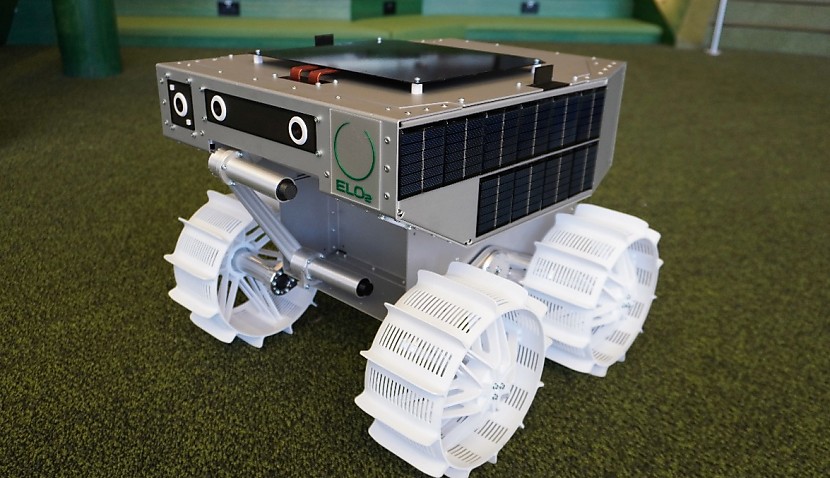
The early design shows off the “scoop” that will be used to collect lunar soil that will eventually be turned into oxygen to support NASA astronauts.
ELO2 is competing against rival AROSE to provide the device to NASA to support its Moon to Mars mission. It comes after the ASA granted both consortiums $4 million earlier this year to create a prototype.
“The initial prototype focuses on testing chassis and suspension subsystems and features an early design of a collection device and special wheels that will enable the rover to cross the moon’s challenging terrain,” said ELO2.
“The rover prototype’s unveiling marks an essential step in this process, focusing initially on testing chassis and suspension subsystems while paving the way for iterative enhancements and expanded functionalities throughout stage one of the Trailblazer program.
“This prototype and the following iterations are a practice in de-risking critical technologies, validating requirements, and ensuring their seamless integration – crucial for the success of Australia’s national flagship mission. Prototyping such as this is an important step in testing designs for continuous improvement; something that is essential in the space industry.”
RMIT University has been a key backer of the ELO2 consortium’s plan, supporting the technical design and precision manufacturing using metal 3D printing.
Professor Martin Leary, the 3D printing research leader, said, “Advanced manufacturing and 3D printing are strengths of the RMIT Advanced Manufacturing Precinct.
“Connecting our research capabilities to industry-based opportunities for impact is part of what RMIT strives to do and does well.”
On the day of the prototype’s unveiling, the Australian Space Agency also revealed the winning design would be called Roo-ver after the name triumphed in a poll of 20,000 people.
Roo-ver secured 36 per cent of the vote, beating off competition from three other shortlisted names: Coolamon, Kakirra, and Mateship.
It follows the ASA urging schoolchildren to put forward suggestions.
The winning entry was submitted by Siwa from NSW, who said, “Our lunar rover deserves to be named after something iconically Australian, reflecting the Aussie spirit as we launch into this new endeavour.
“A kangaroo is part of the Australian coat of arms, and it’s time for Australian science to take the next leap all the way up into space.”
Space Connect also reported last month how ELO2 created a program allowing children aged 5–12 to recreate their work.
The consortium has teamed up with the One Giant Leap Australia Foundation to allow kids to build a scoop to simulate collecting soil from the moon. The program will be run using an online platform to make it accessible to any child across the country.
It follows rival AROSE giving 1,000 Australian students the chance to enrol in an online “space academy” that will teach them vital industry skills.

Adam Thorn
Adam is a journalist who has worked for more than 40 prestigious media brands in the UK and Australia. Since 2005, his varied career has included stints as a reporter, copy editor, feature writer and editor for publications as diverse as Fleet Street newspaper The Sunday Times, fashion bible Jones, media and marketing website Mumbrella as well as lifestyle magazines such as GQ, Woman’s Weekly, Men’s Health and Loaded. He joined Momentum Media in early 2020 and currently writes for Australian Aviation and World of Aviation.
Receive the latest developments and updates on Australia’s space industry direct to your inbox. Subscribe today to Space Connect here.









